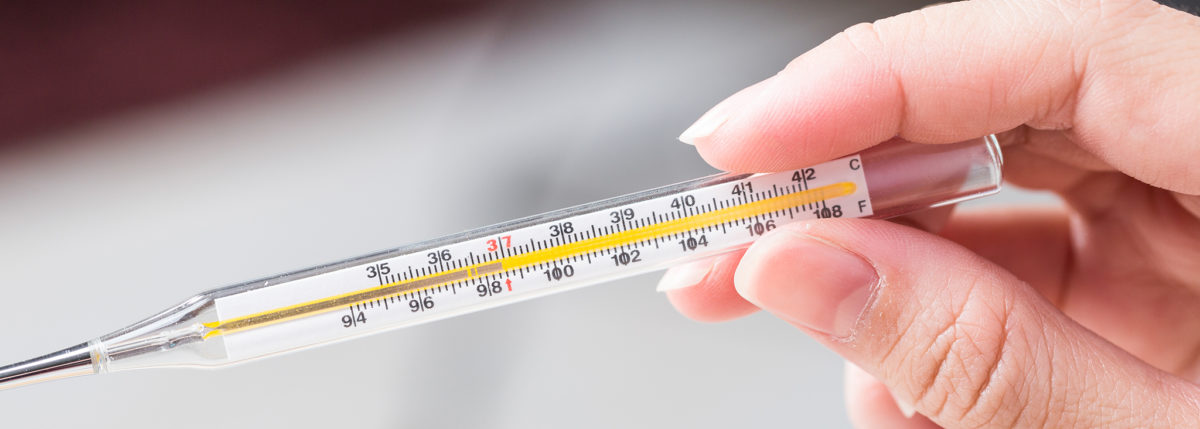Thermometers + Insulin
Purchase a MedAngel thermometer here!
Sometimes diabetes pushes us to our limits. Sometimes it feels like we are pushing our diabetes tools to their limits.
If you’ve ever wondered how long was too long to keep that vial of insulin in your desk drawer at work, or if you’ve accidentally left the pharmacy bag in the front seat of the car overnight (in winter or summer), check out this guide to learn the effects of temperature on insulin.
At what temperature should insulin be kept?
When keeping insulin in your fridge at home for long-term storage, the MedAngel team recommends storing it on a center shelf. This helps avoid the back of the fridge, where it could freeze, and the door—even though the butter shelf makes for a handy insulin shelf—where insulin can get too warm due to opening and closing.
“We recommend storing it in a Tupperware box or airtight container, mostly the center shelf,” says Laura Krämer, a pharmacist at MedAngel. “[Storing it in] a fridge that is used less is even better because opening it frequently changes the temperature. Typically you get quarterly or half-year prescriptions, so you have meds in the fridge for at least three months. It’s important to get that right.”
Do I really need to keep a thermometer with my insulin?
If you want to know for sure what your fridge is doing to your medications, because as is the case with other aspects of diabetes, knowledge is power.
Laura warns, “There’s a temperature monitor in every warehouse, ship, plane and truck that stores medications. If there is a slight deviation from the norm, the distributor needs to call the manufacturer and consult based on documentation [to determine] if the product is still good for sale. But then, medicines stay at our house and travel with us for months.”
Without a thermometer, Laura says, there is no way of knowing of the one crucial factor influencing their quality: temperature.
App-based thermometers like MedAngel can travel with you and alert you when the temperature in your fridge changes and prevent temperature deviations from tampering with the effectiveness of insulin.
How long can I keep sealed (unopened) insulin?
Take note of the “use by” and “expiration” dates on your insulin boxes—yes, these are two different dates!
According to Consumer Med Safety, unopened vials of insulin can be safely stored in the fridge at 2° to 8°Celsius (36° to 46°Fahrenheit) until the expiration date.
Unused insulin remains stable for 28 days at room temperature (15°-25° Celsius, 59°-77° Fahrenheit).
How long can I keep opened (in-use) insulin?
Short-term storage of in-use insulin requires vigilance to ensure the insulin isn’t exposed to extreme temperatures for long periods of time. Although vials and pens have different guidelines, 28 days is a good rule for opened insulin: store it at room temperature for four weeks before discarding it. Writing the date on the box when you open a new vial of insulin can help you remember how long ago it was opened.
Novo Nordisk gave the following recommendation to the InDependent Diabetes Trust for its insulin: “Once open vialled insulin is stable for up to three months in the refrigerator and six weeks at 25 degrees C (77 degrees Fahrenheit). Insulin in cartridges is stable for up to four weeks once opened if stored at 25 degrees C; we do not recommend that in use cartridges are stored in the refrigerator.”
What temperatures are considered “extreme?”
Direct sunlight and freezing temperatures can damage the insulin at a molecular level. Don’t use insulin that has ever been stored above 40° Celsius (104° Fahrenheit), or insulin that has been exposed to temperatures of -10° to -20° Celsius (-4° to -14° Fahrenheit).
Oops! I froze my insulin. Now what?
“It’s important to keep a thermometer with your insulin because extreme high or low temperatures render insulin ineffective,” says Laura Krämer. “The mix of chemical and degradation processes,” Laura says, “doesn’t harm the body.”
However, don’t try to use the insulin, even after it thaws. “If frozen, insulin is completely ineffective. It could take you awhile to figure out what the problem is. It could then lead to lows when you use an effective insulin.”
I think my insulin is ineffective. What should I do?
When in doubt, throw it out.
Address any hyperglycemia or hypoglycemia accordingly. Be careful when switching to a new vial or pen, and make sure that insulin hasn’t been exposed to the same conditions that rendered the previous one ineffective.
Laura advises, “If you finish one pen and it has 60 percent potency and then start a new pen is 90 percent potency, you are dosing too much because you are comparing it to an insulin that is less effective. This is especially dangerous for children.”
Meanwhile, more research needs to be done in this area, Laura says. “There is no clinical data on how often insulin is ineffective. We are hoping of doing some kind of quality testing with a hospital or independent third party to get more data on this. Hopefully during next year.”
Purchase a MedAngel thermometer and see how it helps in diabetes management.
REFERENCES
Consumer Med Safety: Storage of Insulin
InDependent Diabetes Trust: Storing Insulin
MedAngel: Storing Temperature-Sensitive Medications Correctly






